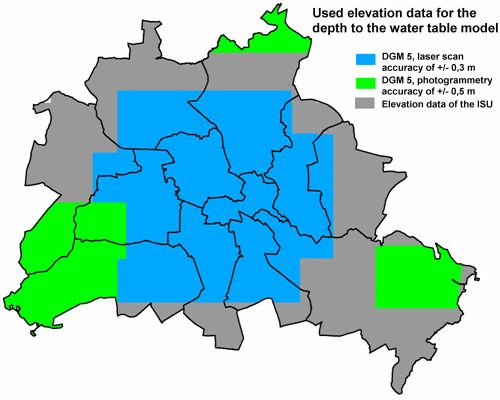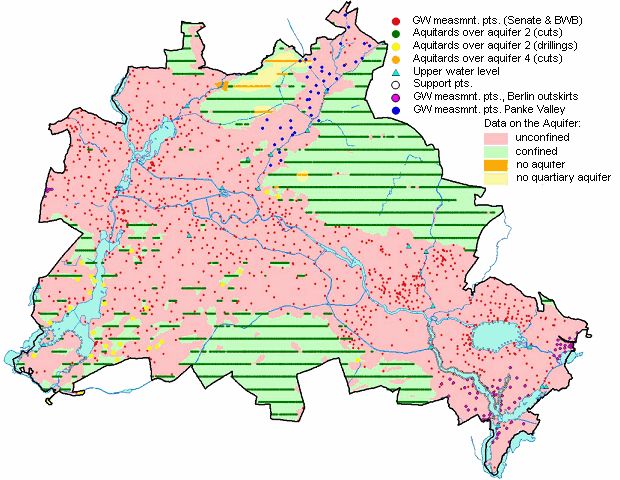The depths to groundwater are calculated from the difference between the terrain elevation and the level of the potentiometric surface, or, in the case of confined conditions, the covering surface.
The ascertainment of groundwater levels is based on data taken from 1456 groundwater measurement sites (piezometers) of the Berlin State Groundwater Service, from water-supply companies and from the Brandenburg State Environmental Agency in May 2006.
Areas in Berlin with confined potentiometric surfaces were investigated using the digital information on hydrogeological sections of the Geological Atlas (SenStadt 2002) of Berlin, as well as selected bores (ultimate depth > 10 meters) from the drilling archives (cf. Fig. 6). At these measurement points, it was not the water levels, but rather the lower surfaces of the aquitards that were ascertained digitally.
Compared to the edition 2007 the depth to the watertable of the existing map was calculated using a essential improved terrain elevation model. The terrain elevations were taken from a Digital Terrain Elevation Model based on different data bases with partly significant higher accuracies (cf. Fig. 5).
For approximately 70 % of the area the data from the Digital Terrain Elevation Model DGM5 with a grid size of 5 m and an accuracy of +/- 0.5 m were used. These data exist for big parts of the inner city, the south-west of Berlin and areas around the Müggel lake and were produced from data of laser scan flights and photogrammetry.
For other areas data from the dataset for the Digital Terrain Elevation Model of the Urban and Environmental Information System were used. These data were collected from calibrated points from different data sources. Because of the inhomogeneity of the database the errors are bigger in the unsettled regions than in the settled city centre, because of the interpolations for big areas, caused by the low point density. These data are altogether clearly more unexact than those from the DGM5.
The interpolation of the statistical base and the calculation into a common grid of 10 m was made with a calculation method (Surfer).


